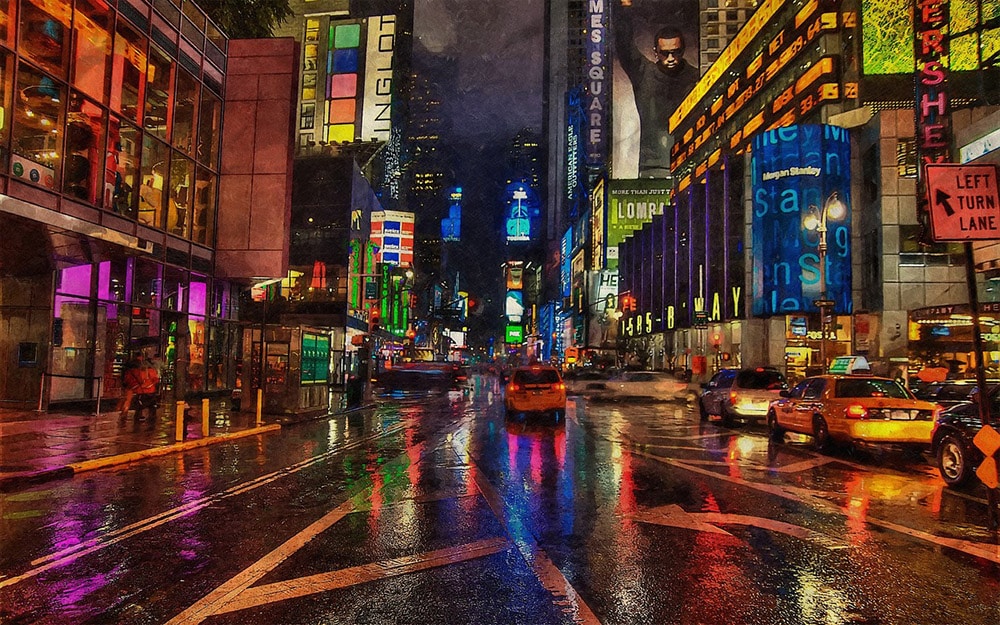Do Digital Billboards Distract Drivers?

Drivers should always give their full attention to the road when driving. Unfortunately staying on task can be a challenge in a world filled with constant distractions. Most Baltimore drivers do their best, though, and many even take preventative measures like putting their phones out of reach when they are behind the wheel.
Distracted driving is not exclusive to phone use, though. Common roadside features like billboards are such a staple of American driving culture that you might not even realize just how distracting they can be.
Traditional billboards are not the only problem. Digital billboards distract drivers significantly more, which puts everyone on the road in danger. Our lawyers know that distracted drivers are much more likely to cause car accidents than drivers who are fully focused on the task at hand.
Digital Billboards vs. Traditional Billboards
The billboard has a long history in the United States, with its origins reaching back all the way to the 1830s. The standard billboard size and shape that most people recognize today was created in 1900. When big companies like Coca-Cola and Kellogg realized that they could create one ad that would fit billboards all over the country, they began mass-producing billboard advertisements.
The explosion in billboard growth led to the Highway Beautification Act, which President Lyndon B. Johnson signed into law in 1965. This act limited where billboards could be erected, and also instituted additional standards for things like spacing and lighting.
The billboards that motorists were looking at in 1965 are much different than those that drivers deal with today. After a few years of testing, the digital billboard made its American debut in 2005. Billboard advertisements are no longer limited to static pictures printed on vinyl. With a screen, billboards include movement, extra lighting, and can easily switch between different ads.
While these advancements might be great for the advertising industry, they are dangerous for drivers. According to the study “Effects of electronic billboards on driver distraction,” digital billboards have a potentially deadly impact on drivers’ gaze behavior.
Compared with regular traffic signs, drivers look at digital billboards for significantly longer than traditional billboards. This is not a flaw in their design—it is intentional. Manufacturers and advertisers aim to draw motorists’ attention by using eye-catching pictures that may either be:
- Static
- Dynamic
- Full Motion
These purposely eye-catching designs take drivers’ eyes off the road for longer than two seconds, often in a long, single glance. While this might seem like a relatively short period of time, researchers have found that glancing away from the road for as little as two seconds doubles your chance of causing a crash.
What makes digital billboards especially dangerous is that they often draw unintended glances. Even when motorists are doing their best to truly stay focused on driving, the lights, colors, and movement so often found on digital billboards lead to involuntary glances.
Bright digital billboards can also pose a heightened safety hazard during nighttime driving. Especially in poorly lit areas, a digital billboard may stand out more than anything else and involuntarily draw a driver’s attention.
The Components of Distracted Driving
Distracted driving can be broken down into three components. These three components are as follows:
- A visual distraction is anything that takes your eyes off the road.
- A manual distraction is when you take your hands off the steering wheel.
- A cognitive distraction is anything that takes your mind and thoughts off driving.
Distractions can be comprised of all three distracted driving components, or any possible mix of just two. For example, reading a text message would be a manual, visual, and cognitive distraction since it requires you to physically pick up your phone, look at the screen, and think about what you are reading. Digital billboards distract drivers both visually and cognitively.
The bright lights, movement, and dynamic images easily draw drivers’ attention and gaze, even when they do not mean to take their eyes off the road. This is a visual distraction.
Once they are looking at the digital billboard, a motorist might switch from thinking about driving to thinking about the advertisement. If it is for a refreshment and a driver is on a road trip, they might turn their focus to thinking about the closest place to stop for water or a soda. A pest control billboard might make them think about the last time they scheduled their own house for servicing. These are both examples of how digital billboards can cause cognitive distractions.
When combined, a visual and cognitive distraction can drastically increase your risk of causing an auto accident. Distracted driving can also be especially dangerous when it is combined with other dangerous habits, such as drowsy driving or driving under the influence of alcohol.
Digital Billboards and Motor Vehicle Accidents
By this point, it is clear—digital billboards distract drivers. Although there is no hard and fast data on how many car crashes are caused by digital billboards, we do know that digital billboards are a distraction, and that there are figures on distracted driving crashes.
In 2018 alone, distracted drivers injured approximately 400,000 people and killed more than 2,800.
The Centers for Disease Control and Prevention—the CDC—recommends that drivers do not try to multitask while driving. Anything from adjusting your side or rearview mirrors to eating a meal on the go is a distraction, and can have serious or even fatal consequences.
These are both examples of behaviors that you have control over. Unfortunately, most drivers have no control over whether they will encounter a digital billboard. This does not mean that motorists should just accept that these types of billboards are distracting and give them a good look, though. Instead, drivers can:
- Try different driving routes that have fewer or no digital billboards
- Mentally prepare themselves when they know a digital billboard is coming up
- Quickly return their gaze to the road when they notice it drifting
Moving Forward After a Distracted Driving Accident
While digital billboards distract drivers, it is still up to individual motorists to behave correctly behind the wheel. If you were injured by a driver who was distracted by a digital billboard, smartphone, or anything else, you deserve help.
For injury victims, that help often comes in the form of compensation secured through the careful actions of a personal injury claim. At Belsky & Horowitz, LLC, we know what it takes to go up against the insurance companies and get our clients the compensation they are owed.
Do not hesitate to contact us for a consultation with one of our compassionate and knowledgeable car accident attorneys. Your first consultation will always be free of charge.






